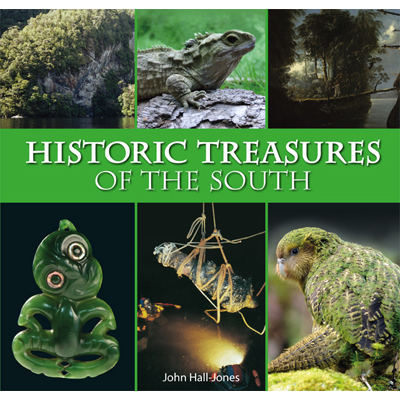Historic Treasures of the South
Historic Treasures of the South
John Hall-Jones 2012 Published by Craigs Design & Print. 128pp ISBN 978-0-908629-72-5
Blurb
With an impressive total of 31 historical books, popular author Dr John Hall-Jones is in an unique position to write this book on Historic Treasures of the South. Hall-Jones writes of the arrivals of the early Maori and later the Europeans, the navigators, sealers and whalers, in the southern part of New Zealand. In doing so he takes us to the places where they first made landfall and shows us the visible evidence that survives there today including: • Dusky Sound – the remains of Cook’s observatory of 1793. Also the relics of the first two European houses in NZ, the first shipbuilding and the first shipwreck. • Spit Island, Preservation Inlet – the site of two Maori battles in the 1780s. • Cuttle Cove – site of the first whaling station in New Zealand. • Codfish Island – first European settlement in southern New Zealand and now a sanctuary for the very rare kakapo. In visiting these historic places the author makes full use of the original firsthand descriptions of Dr Edward Shortland, Bishop Selwyn, Captain Stokes, Commissioner Mantell and Chief Surveyor Thomson, whose journals are important treasures in our history. The text is liberally illustrated with some 200 photographs, including a priceless collection of Maori taonga (treasures) in the Southland Museum. Other photos of historic objects include: • Greenstone Mere • The first building in Invercargill • A Benz benzine driven three-wheeler • Takahe (Notornis mantelli • Old whalepot at Fortrose • Tuatara • The Resolution alongside Astronomer Point • Raising one of the Endeavour’s cannons • Hei-tiki
Mini Review
This is a POP page.
|
